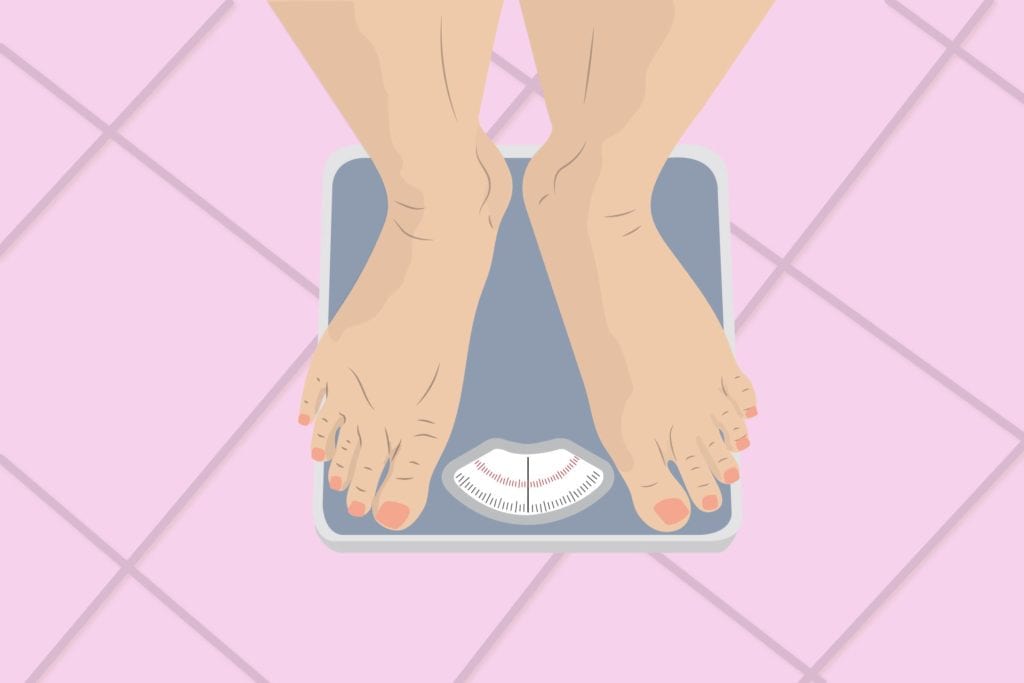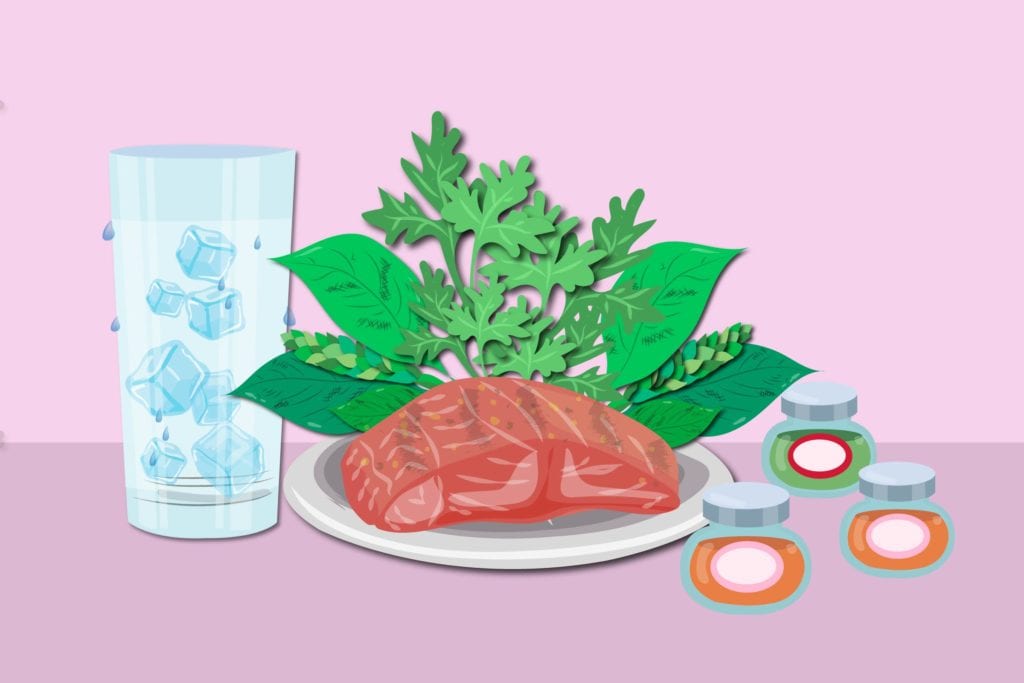

Dropping extra pounds can be tough enough. Add some stiff, achy joints and extra dose of fatigue to the task, and it may feel near impossible.
But with some effort, you can slim down, and here’s why it’s important: Excess weight can make inflammatory arthritis even worse. “Fat tissue releases proteins called cytokines, which cause inflammation in the body,” explains Caroline A. Andrews, MD, medical weight management specialist at the Hospital for Special Surgery in New York City. The role of weight loss is one of many things your doctor might not tell you about managing arthritis.
How Your Weight Affects Inflammation
Cytokine levels are already high when you have inflammatory arthritis; obesity takes it up a notch. In fact, a research review of 329 studies found that obesity can lead to more active and severe rheumatoid arthritis (RA) and psoriatic arthritis.
“Extra weight also places increased pressure and stress on the joints, which can worsen the pain and stiffness associated with inflammatory arthritis,” says Dr. Andrews. Plus, obesity may also impact how well your meds work. One study published in the journal Arthritis Care & Research showed regardless of the type of initial treatment, people with RA who were overweight or obese were significantly less likely to achieve sustained remission, compared to those with a healthy BMI.
The basics to losing weight apply to everyone, whether you have arthritis or not: Eat a variety of fruits and veggies and choose whole grains, low-fat dairy, and lean protein. (Try these tips to make cooking with arthritis easier.) Watch your portions, have regular, balanced meals, and of course, exercise more.
One CreakyJoints Facebook member Brenda keeps her advice simple and to the point: “Eat whole fresh foods! Get rid of the processed crap!”
Here are 12 more tips to help you shed unwanted pounds and help your joints feel better:
1. Fill up on foods that fight inflammation
Those mostly come from plants, like veggies and fruits, whole grains, nuts and seeds, legumes, and herbs and spices. An anti-inflammatory diet is helpful for anyone who is trying to lose weight, but it’s particularly important if you have arthritis, says Robin Foroutan, MS, RDN, a registered dietitian nutritionist and spokesperson for the Academy of Nutrition and Dietetics. These foods can help your body better manage normal inflammation, as well as help it put out the excess inflammation that comes with inflammatory arthritis.
“Anti-inflammatory foods also indirectly support weight loss by boosting energy levels, improving digestion, and supporting decreased food consumption because these foods are more filling,” says registered dietitian Cat Taylor, LD, CSSD, with Nutrition on Demand.
2. Move more throughout the day
It may feel counterintuitive with stiff, painful joints, but not moving can actually make arthritis symptoms worse: “It’s one of those negative cycles,” explains Audrey Lynn Millar, PhD, PT, chair and professor of physical therapy at Winston-Salem State University in North Carolina. “If you don’t move the joint, it will actually become more painful.”
Research shows if you do even a little bit of exercise, pain will decrease, she says. “That’s because any sort of exercise helps lubricate the joints and maintain function. Think of it like a creaky door hinge: If you don’t do anything, it gets worse and worse. But if you add a little oil and move back and forth, it gets better.”
3. Add salmon to your weekly grocery list
Or any fatty fish: Salmon, mackerel, trout, herring, sardines, anchovy and branzino all make the list. They contain the most active form of omega-3 fatty acids, explains Taylor. This places these types of fish at the top of the anti-inflammatory food chain.
A small study published in the journal Arthritis Care & Research suggests eating more fish may be associated with reduced joint inflammation in RA patients. Not into fish? Other omega-3 sources (less potent than fish) include chia seeds, flaxseed oil, and walnuts.


4. Ditch the potato chips
You know they’re no good for you, but get this: One study published in the New England Journal of Medicine found these fried slices may contribute to more weight gain per serving than any other food. And if that’s not reason enough to pick a different afternoon snack, these and other deep-fried foods may contain unhealthy saturated and trans fats that may promote inflammation.
5. Make friends with your food processor
To lose weight and stay healthy, you want to eat tons of veggies — every day, as many as you can, says Foroutan, who is an integrated dietitian at The Morrison Center in New York City. They offer vitamins, minerals, and phytonutrients; they’re also low in calories and high in fiber to help you feel fuller, longer.
But sometimes the mere thought of shredding a carrot or cutting up greens makes your hands hurt. Enter your new BFF: With the push of a button, you can slice, chop and dice, with minimal effort on your joints. Some veggies that may help fight inflammation: tomatoes, spinach, broccoli, and Foroutan’s favorite: watercress, which is super high in antioxidants.
6. Try avocado oil
Not only does avocado oil provide healthy fats that help with inflammation, but also helps with satiety, says Foroutan. Olive oil is another good option. Taylor uses olive for salad dressings and avocado oil to cook, since it does better under heat. Limit oils high in saturated fat, like coconut and palm kernel oil.
7. Walk, swim, or bike
These are safe forms of aerobic exercise for people with arthritis, and they can help you control your weight and give you more stamina and energy. Walking, in particular, is great because it’s functional, says Millar, a fellow of the American College of Sports Medicine.
Start slow and break up your walk into short intervals to make it more manageable: 10 minutes in the morning and 10 in the afternoon, she suggests. Add a minute each week to both; it isn’t a huge increase but will eventually build up. Try to work up to 30 total minutes a day.
In a CreakyJoints Facebook post, Nancy shared: “I walk several miles every day. The walk may take a while, but I keep at it.” Daily tasks like mowing the lawn, playing golf, or walking the dog also are aerobic if you do them at a moderate intensity level. Talk to your doctor about fitting physical activity and exercise into your arthritis treatment plan.
8 .Do partial squats or use elastic bands
The goal is to build lean muscle mass so you burn more calories. This is even more critical when you’re trying to lose weight with arthritis, because as muscles grow stronger, they provide greater joint support and help reduce the load and stress on painful joints. Studies show strength training helps reduce pain from arthritis and eventually improve function as well, says Millar. Talk to your doctor or physical therapist about the safest strength training exercises for you.
9. Ease up on sugar
Number one, it’s inflammatory. Plus, it stokes the appetite, says Foroutan: “Eating sugar can make you crave more sugar.” It may also feed the wrong kind of bacteria in the digestive tract, adds Foroutan. Some research shows that there’s a connection between an unbalanced gut microbiome and rheumatoid arthritis. Refined carbs, like white bread, cookies, and pastries, also promote inflammation.
10. Experiment with herbs and spices
This is a super healthy way to flavor food; plus, herbs and spices offer a wealth of anti-inflammatory plant compounds, says Foroutan. Her favorite: turmeric, which you can add to soups and stews, sprinkle over sautéed vegetables, and even stir in scrambled eggs. Oregano is another potent flavor option that has lots of anti-inflammatory value, she says.
11. Drink more water
Mild dehydration is sometimes masked as hunger, so before you grab a handful of pretzels or nuts, sip some water and see if your hunger pangs subside. Staying well hydrated also helps you manage your appetite and weight and boost energy.
12. Ask your doctor about your meds
Some medications that are used to treat RA or other inflammatory arthritis conditions can impact weight, says Dr. Andrews. For example, long-term use of glucocorticoids is associated with weight gain, and several medications used for arthritic pain can also cause weight gain. If you have these side effects, talk to your doctor.





